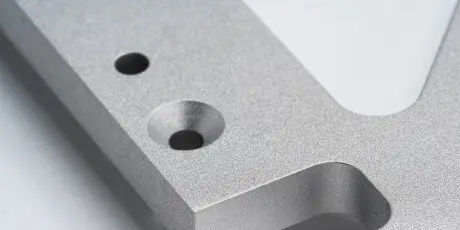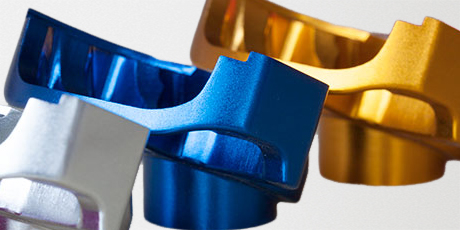
Quick Look
| Density | Tensile Strength | Yield Strength | Elongation at Break | Hardness |
|---|---|---|---|---|
| 7.7-7.8 g/cm³ | 900-1300 MPa | 650-1100 MPa | 10-20% | 30-40 HRC |
About the Material
Advantages:
Complex Geometries: Binder Jetting can produce parts with intricate geometries, including internal channels and lattice structures.
Cost-Effective for Batch Production: Binder Jetting is economical for producing multiple parts simultaneously, making it suitable for medium to high-volume production.
No Support Structures: The powder bed provides natural support, allowing for the creation of complex features without additional supports.
Heat Treatment Flexibility: Stainless Steel 17-4PH can be heat treated to achieve specific mechanical properties, offering versatility for different applications.
Limitations:
Porosity: Parts produced via Binder Jetting may have higher porosity compared to parts made with other metal additive processes, requiring additional post-processing.
Post-Processing Requirements: Sintering or infiltration is needed to achieve full density, which can add complexity to the production process.
Surface Finish: The as-printed surface finish may require additional post-processing, such as polishing or machining, to meet desired specifications.
Chemical Composition Table for Stainless Steel 17-4PH
| Element | Typical Composition (%) |
| Iron (Fe) | Balance |
| Chromium (Cr) | 15-17.5 |
| Nickel (Ni) | 3-5 |
| Copper (Cu) | 3-5 |
| Niobium (Nb) + Tantalum (Ta) | 0.15-0.45 |
| Carbon (C) | ≤ 0.07 |
Mechanical Machining Properties Table for Stainless Steel 17-4PH
| Property | Value |
| Machinability Rating | Moderate |
| Cutting Speed (m/min) | 20-40 |
| Tool Wear Resistance | Moderate |
| Coolant Requirement | Essential |
| Surface Finish Quality | Moderate |
Design Parameters Table for Binder Jetting with Stainless Steel 17-4PH
| Design Aspect | Value |
| Minimum Wall Thickness | 1.5 mm |
| Minimum End Mill Size | 2.0 mm |
| Minimum Drill Size | 1.5 mm |
| Maximum Part Size | 300 mm x 300 mm x 200 mm |
| Undercuts | Allowed |
| Radii : Depth | Minimum 1.5 mm radius for depth features |
| Tolerance | ±0.3 mm |
| Maximum Temperature | 315°C |
Industry Applications and Case Studies for Binder Jetting with Stainless Steel 17-4PH
Aerospace Industry:
Application: Production of lightweight, high-strength components.
Case Study: An aerospace company used Binder Jetting to produce stainless steel brackets, reducing weight while maintaining strength and durability for flight components.
Medical Industry:
Application: Production of surgical instruments and medical devices.
Case Study: A medical device manufacturer utilized Binder Jetting to create custom surgical tools, reducing production costs and enabling rapid iteration.
Automotive Industry:
Application: Manufacturing of exhaust components and structural parts.
Case Study: An automotive manufacturer used Binder Jetting to produce stainless steel exhaust manifolds, optimizing weight and corrosion resistance.
Frequently Asked Questions (FAQs) about Binder Jetting with Stainless Steel 17-4PH
What materials can be used in Binder Jetting?
Binder Jetting can use a variety of materials, including metals, ceramics, and sand. Stainless Steel 17-4PH is one of the commonly used metal powders.
Is Binder Jetting suitable for functional parts?
Yes, Binder Jetting can produce functional parts, but post-processing such as sintering or infiltration is often required to achieve the desired mechanical properties.
What industries benefit from Binder Jetting with Stainless Steel 17-4PH?
Industries such as aerospace, medical, and automotive benefit from the strength, corrosion resistance, and cost-effectiveness of Stainless Steel 17-4PH parts produced via Binder Jetting.
How accurate is Binder Jetting with Stainless Steel 17-4PH?
Binder Jetting can achieve tolerances of ±0.3 mm, which is suitable for many functional applications, but additional post-processing may be needed for higher precision.
What post-processing is required for Binder Jetting parts?
Post-processing may include curing, sintering, infiltration, or surface finishing to achieve the desired properties and appearance.
Can Binder Jetting produce complex geometries?
Yes, Binder Jetting is well-suited for producing complex geometries, including internal features and lattice structures, without the need for support structures.
How strong are parts made with Binder Jetting and Stainless Steel 17-4PH?
Parts made with Stainless Steel 17-4PH are strong and corrosion-resistant, making them suitable for demanding environments. Post-processing can further enhance their mechanical properties.
Finishing Options












Parts Made by AutofabX


